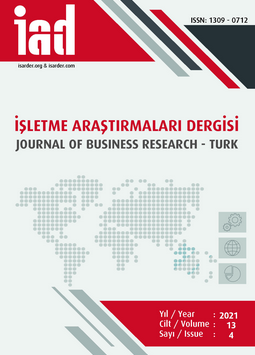Kalkınma ve Yatırım Bankalarının CAMELS Analizi Yöntemiyle Finansal Performanslarının Değerlendirilmesi
Evaluating Financial Performances of Development and Investment Banks Through Camels Analysis
Author(s): Ersan ÖzgürSubject(s): Business Economy / Management, Economic development, Accounting - Business Administration
Published by: İşletme Araştırmaları Dergisi
Keywords: CAMELS Analysis; Development and Investment Banks; Financial Audit; Financial Ratios;
Summary/Abstract: Purpose – Development and investment banks are established to provide resources and project support to investors for growth of the economy in developing countries. These banks facilitate foreign capital inflow into the country, thus supporting investments to be made in the country. Banks also provide technical support by evaluating the efficiency and profitability of the projects decided to be implemented. Development banks and investment banks complement each other, and development banking and investment banking are considered within the same group in Turkey. The capital adequacy ratio of development and investment banks in Turkey is 25.6% and the average return on equity is 12.5% by 2020. It is considered necessary to measure and audit the performances of banks with important functions in the economy. In this way, it is ensured that banks with negative financial data are identified in advance. Design/Method/Approach – One of the methods adopted in remote surveillance in developed countries is CAMELS analysis. In this study, a total of 9 development and investment banks including 3 public and 6 private banks operating between 2009-2019 were selected as the sample. CAMELS analysis was conducted with 21 financial ratios determined within the context of 6 components for the banks in the study. Findings – The study results revealed the positive and negative values of the development and investment banks regarding CAMELS indicator values together with their trends by years. The results not only guide bank officials but also give certain clues about what kind of an attitude and behavior they should maintain in their future-oriented perspectives. Discussion – By using the CAMELS rating method, different applications can be made by the researchers in the future by using different financial ratios in the components. In addition, it is foreseen that development and investment banks, which have an important position for Turkey, can be researched with different methods.
Journal: İşletme Araştırmaları Dergisi
- Issue Year: 13/2021
- Issue No: 4
- Page Range: 3206-3221
- Page Count: 16
- Language: Turkish

